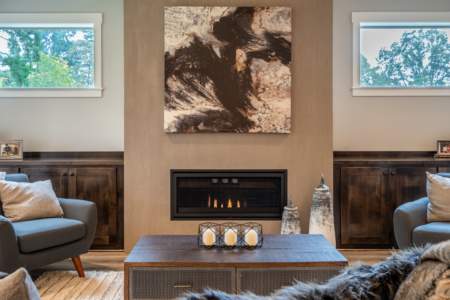Winter Indoor Air Quality
Posted December 5, 2020 in Real Estate Trends

When you think back to last summer, one of the most memorable events was the terrible wildfires all around the western states. The hazardous air quality measurements here in Clark County and surrounding areas was off the charts. We were encouraged to limit all outdoor activity for days at a time. Social media was full of suggestions how to keep the hazardous air out of our homes. But did you know that even under normal conditions your home could be making you sick? According to the EPA, indoor air pollution is among the top five environmental dangers and indoor air can be up to five times more polluted than the air outside. Many serious health complications such as allergies, asthma, lung cancer and heart problems can be linked to poor indoor air quality—and not even just from breathing! Our skin actually absorbs even more chemicals into our body than what enters our lungs every time we breathe. So how does this bad air get inside our home? Toxins and allergens are released into our home in many ways such as through cooking, fireplaces, and candles, as well as off-gassing from toxic paints, sealants, and surface materials. Also consider how much mold loves our damp climate here.
The EPA estimates that people spend about 90% of their time indoors. Considering the current COVID-19 precautions as well as the cold, rainy months ahead of us here, this percentage may be even higher now. So what can you do to protect yourself and your family from unhealthy indoor air quality? Here are some tips:
Limit your combustion. Burning candles, using the fireplace, and cooking with gas appliances can produce higher levels of Co2.
Change your air filter often. Shoot for a MERV 13 level air filter to help filter out pollutants like dust, bacteria, burning wood, smog, mold, pollen, and pet dander.
Ventilate! Use your bathroom fans, laundry fan, and your range hood fan to get rid of moist air that leads to the growth of mold. Allow fans to operate for at least 30 minutes after you leave the room.
Seal out garage air. Use weather stripping on the door from your garage to your house. Don’t leave the door from the garage to your house open. Spread a bead of caulk or foam between the drywall and the concrete foundation joint of the shared wall of your garage and house. Also apply caulk or foam around any other holes or penetrations in your garage drywall to keep garage air from getting inside your walls and inside your house.
Install automatic fan switches. “Humidity sensing” or “occupancy sensing” switches in your bathrooms and laundry room will automatically turn on exhaust fans to ventilate these rooms in case you forget.
Choose a certified Green Builder. At Urban NW Homes, we are an NGBS (National Green Building Standard) certified green builder and EPA “Indoor airPLUS” program partner. We require “low” and “no VOC” building products for the construction of our homes. We require our tradespeople to “cut outside” of the home and use dust collection devices when possible. We thoroughly clean and vacuum the home multiple times during the building process. We cover ductwork with screens and filters during construction and work hard to keep all construction dust out of the HVAC system. Our cleaners only use safe, eco-friendly, non-toxic final home cleaning products. For a comprehensive list of healthy indoor products see the National Green Building Standard (NGBS) list produced by Home Innovation Research Labs NGBS Green Certified Product List at www.homeinnovation.com/greenproducts
Don’t let indoor air quality make you sick this winter.
 Jerud Martin
Jerud Martin
Director of Construction/Owner
Urban NW Homes • urbannw.com • 360-823-5480